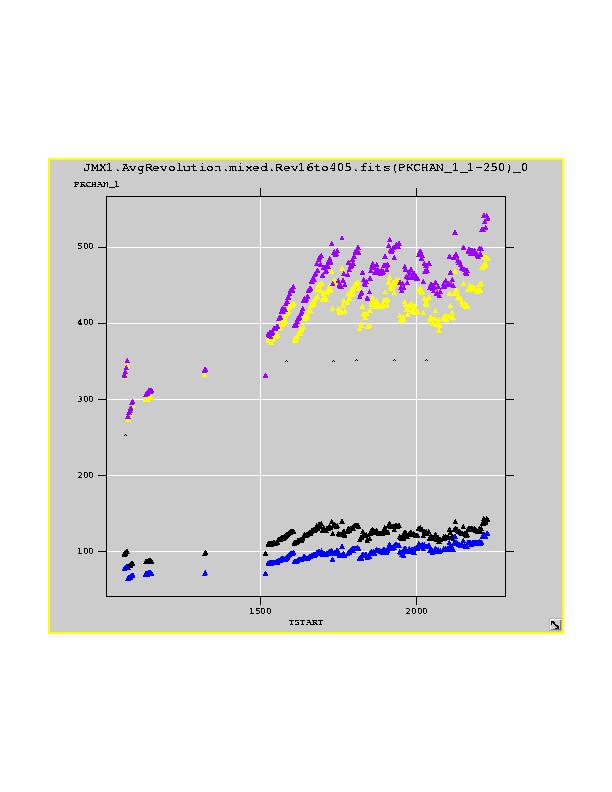

The figure shows the average raw ADC channel position of each of the calibration peaks for JEM-X1: Black and blue are the two iron sources at 6 keV, purple and yellow are the two cadmium sources at 22 keV. The channel positions of each peak are the channels determined by the onboard ADC, and have not been converted into keV values. This figure covers revolutions 16 to 405.
Clearly the positions of the peaks rise quite steeply with time, indicating that the gain of the detector increases with time. To maintain the detector gain at a reasonable value, the high voltage supply (HV) on the microstrip plate has been taken down one step occassionally (black arrows). This is to ensure that the instrument background lines used for monitoring the gain correction stay within the instrument's range of sensitivity.
When the gain is very low, the lowest end of the energy range (< 3 keV) is affected by the low energy cutoff that is employed to remove electronic noise. When the gain is very high, the Xe line is affected by the high energy cutoff used to remove particle background from the telemetry.
This gain increase with instrument use is apparently caused by the drift of microstrip ions through the glass of the microstrip plate. This effectively decreases the distance between the strips, increasing the field between them and raising the gain of the instrument. It should be noted that the rate of gain aging decreases with decreasing value of HV, and that the rate of aging varies for the different sources, with the weaker sources increasing the most rapidly. Click here to see the relative intensities of the four calibration sources. Therefore there is a difference in the rate of aging depending on the degree to which a particular area of the plate is irradiated, and this leads to differential gain aging.
Gain aging can be reversed by switching the instrument off for a long period of time. However, on reactivation, the instrument will show a strong and steady increase in gain until the value last seen before the instrument took a rest is reached. This will take several hours, and therefore a unit must always be switched on a revolution in advance of any planned observation once it has been inactive for several revolutions. A good example of this rapid aging can been seen in JEM-X2 when it was reactivated in revolution 300 after being dormant for 60 revolutions. Users are advised to treat data taken during rapid gain aging with caution.
CAO 14/2/2006